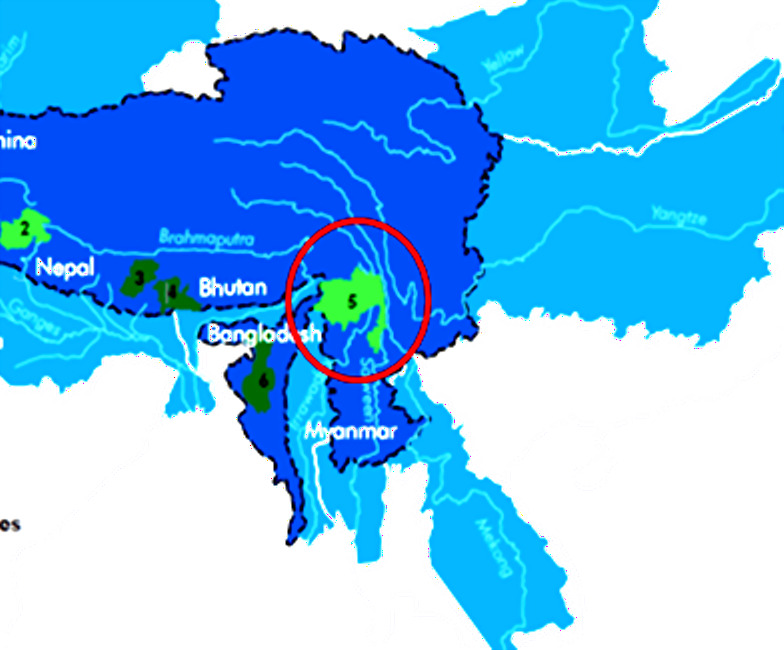
views
Not far from the contentious Line of Actual Control (LAC) between India and China is an enclave of peace where both the neighbours have joined hands with Myanmar for biodiversity conservation and sustainable development.
The Landscape Initiative for Far Eastern Himalayas (HI-LIFE) is a ‘regional conservation and development initiative’ jointly implemented by the Kathmandu based International Centre for Integrated Mountain Development (ICIMOD) with the three countries in a contiguous region close to the trijunction in Arunachal Pradesh where the LAC begins.
The goal is to promote a ‘transboundary landscape approach’ to achieve biodiversity conservation, ecosystem management and development of livelihoods through ‘regional partnerships.’ Community-based approaches are aimed to be strengthened through traditional knowledge and practices.
The initiative covers a wide expanse of 71,452 square kilometers with Myanmar having the maximum share of 66 per cent, followed by China with 22 per cent and India with 12 per cent.
In India, Hi-Life covers the Namdapha National Park which is also a tiger reserve in Arunachal Pradesh and the adjoining villages. In China, the initiative includes Gaoligongshan National Nature Reserve in Yunnan, while it is Hikakabo Razi National Park in Myanmar’s Kachin state.
G B Pant National Institute of Himalayan Environment is the implementing agency in India. Since the initiative was launched in 2018, the institute has carried out socio-economic surveys in 23 villages in the fringe areas of the park. This apart, some villages have been trained on low cost effective agriculture techniques called “trellis system” and development of bio-composting and weed-composting units.
Explaining the reasons for the acceptance of the ICIMOD led initiative by the three countries, an official said, “Although very near, it (Hi-Life) does not overlap with the LAC and there is no boundary dispute among these countries in the region where the initiative is being implemented.”
Confluence of Biodiversity Hotspots
The rationale of selecting the spot stems from the fact that it is one of the most biologically important places on earth. The landscape has been termed by botanists as the ‘Epicentre of Evolution.’
The region covers three biodiversity hotspots, including eight eco regions where 120 species on IUCN Red List like the Chinese Pangolin and Hookock Gibbon are found. In addition, there are nine important bird areas with 520 species in China, 450 in India and 440 in Myanmar.

The landscape is culturally diverse with as many as 20 ethnic and linguistic groups like the Rawang, Jingphaw and Lisu inhabiting the region with an estimated population of 2,14,000 people. Over half-a-million people are benefitted from the ecosystem services in the landscape in the three countries.
The unique geographical, sociocultural and biological features of these sites fit the UNESCO definition of ‘Outstanding Universal Value’. The Three Parallel Rivers of Yunnan Protected Areas included in the initiative is already a World Heritage Site, while the sites from India and Myanmar are in the process of being nominated to the UNESCO category.
However, at the same time, it was found that the region suffers from high poverty and social vulnerability where illegal wildlife trade, unregulated extraction and trade of medicinal plants and forest fires were rampant. There was almost no transboundary monitoring mechanisms to check these dangers.
A proposal for cooperation floated by ICIMOD resulted in the first International Mountain Biodiversity Conference in Kathmandu in 2008 which was further fine-tuned in the subsequent conclaves. Feasibility studies four years later led to the finalisation of development strategies where the issues were identified by the representatives from the three countries along with a framework for cooperation.
Initiative to Extend Beyond 2022
The initiative which has been planned for four years between 2018-22 will also focus on collaborative research, long-term monitoring of key species, value chain development for bamboo and medicinal plants, sustainable community-based tourism development, mapping features of transboundary relevance and joint interventions for transboundary issues related to cross-border trade and forest fires.
It has also been specified that data and information sharing must comply with the national policies of the participating countries. In principle, meta-data from one country is not shared with other countries without the explicit consent of the partner(s) who generate the data. Only synthesised data and information are shared in the form of reports and other publications.
“ICIMOD has received equal cooperation from all the three countries as the overall programme was co-designed by partners from the three countries,” Hi-LIFE programme coordinator at ICIMOD YI Shaoliang told News18. “What we wish to see at the end of this plan period is increased collaboration among China, India and Myanmar in biodiversity conservation and sustainable development, with harmonised approaches and tools for biodiversity monitoring, increased sharing of information, knowledge, technologies and experiences, and more coordinated policies and joint management activities.”
The encouraging response has prompted ICIMOD to conceive ‘Vision 2030’, which would mean extending the duration of the programme for at least eight more years. The objective would also be to strengthen regional voices on the landscape’s contribution to the varied global goals including strategies to deal with climate change.
















Comments
0 comment